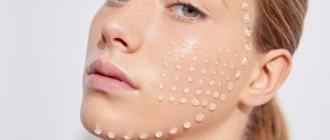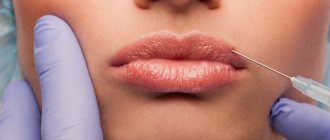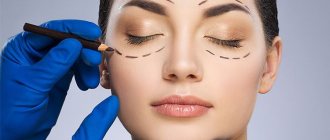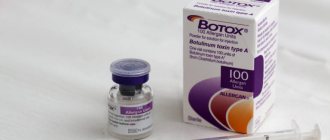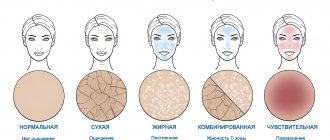Thioctic acid in cosmetology
Testimony from cosmetologists suggests that lipoic acid compounds for the skin improve the absorption of A and C.
Alpha lipoic acid is found in facial products. The main advantage of the substance is its anti-aging properties. In restorative creams and serums, ALA is used as an auxiliary ingredient. There are many cosmetic products for skin with alpha lipoic acid on the market. The beauty industry is not deprived of this, which is good news. How to choose a suitable cream containing lipoic acid? The task will be made easier by purchasing branded products.
TOP 10 preparations for facial skin with alpha lipoic acid:
- Aravia Lipoic Revitalizing Mask is a professional mask with restoration effects. Aravia Lipoic Revitalizing Mask is of Russian origin.
- Anti-aging Essenc is an anti-aging facial product with a lifting effect, produced in Switzerland.
- Laura from the company Evalar (Russian production) - cream with peptides for wrinkles.
- Creative Silver - Israeli silver mask.
- Lsme Wheitening Melasma - has a whitening effect (made in Thailand).
- Alfa Gokujyun is a Japanese professional facial product with lipoic acid.
- Antioxidant Face Creme from Nutribiotic is an imported cream made in the USA.
- FarmStay is a product with horse oil extract that produces a moisturizing effect (South Korea).
- Firming DMAE is a professional moisturizing tonic (America).
- CLC Wrinkle Away is an Israeli product with a lifting effect.
All of the above creams and other products with alpha-lipoic acid have good indications and positive reviews from cosmetologists.
Note! Before using creams, serums, etc., read the contraindications listed in the instructions.
You can buy high-quality preparations for facial skin with alpha-lipoic acid in stationary city pharmacies, specialized retail outlets, and order online.
Insulin resistance
The inability to use glucose as a substrate for the production of adenosine triphosphate (ATP) in insulin-dependent tissues (liver, muscles), and the transition exclusively to the oxidation of fatty acids (increased formation of free radicals), inevitable obesity, increasing insulin resistance, concentrations of free fatty acids (also having free radical activity) – depletion of the antioxidant system.
Hyperglycemia, so-called. glucose toxicity. Enhanced glycation is nothing more than the oxidation of substrates by glucose (which acts as a free radical).
Use at home
Lipoic acid for facial skin has different methods of application, including participation in the preparation of home cosmetics. This is a safe and effective way to use ALA. The fact is that all the ingredients are taken independently - that is, the composition is transparent. And the effectiveness of such products is justified by the content of organic components.
Therefore, masks with the addition of lipoic acid are popular among women. Numerous reviews speak about this. With the right composition you can get rid of acne, wrinkles, sagging and other pressing problems.
This is interesting! After 20 years, the body's protection against free radicals gradually weakens, which leads to the process of premature aging. Vitamin N, which we produce ourselves, helps us cope with this task. However, with age, its reserves are depleted, so after forty years there is an urgent need for ALA.
Anti-aging cosmetics. Everything you wanted to know
In the endless world of the beauty industry, anti-aging drugs can be found everywhere - from face creams and decorative cosmetics to nutritional supplements. Today the segment is so developed that it satisfies the needs of a wide range of age categories. Not only those who want to turn back the clock and become younger again, but also supporters of early prevention will find a remedy for themselves.
And this is not surprising, because the task of anti-aging is no longer just the reduction of various types of wrinkles, now it is also protecting the skin, regulating the level of hydration, evening out the tone, and stimulating the appearance of new cells.
Research shows that consumers want to get rid of at least seven signs of aging: dryness/dehydration, wrinkles around the eyes, deep forehead wrinkles and nasolabial folds, they also want to brighten the skin, reduce pores and increase elasticity, strengthen the oval of the face and restore original volumes .
A product like this is guaranteed to be swept off the shelves. Does it really exist and what ingredients are capable of such a miracle? Advertising and marketing statements from manufacturers sometimes only confuse the situation.
What should you pay attention to when choosing such funds?
Prevention of aging is a new trend in anti-aging care. A good anti-aging product should not only rejuvenate, but also neutralize damage, preventing aging. Day after day, your skin is exposed to environmental aggression: sun, temperature changes, smog, and so on. All this leads to dryness and, as a result, early wrinkles.
Although an advertising campaign typically focuses on a single innovation agent, the best products contain multiple agents. For example, the combination of alpha-lipoic acid (an antioxidant) and DMAE in Dr. Perricone's cosmetics.
Our cells are made up of many different components that affect the aging process, and, unfortunately, we have not yet invented an ingredient that would affect each of them. Pay attention to combination formulations that include growth factors, antioxidants and synthetic peptides, as well as minerals and vitamins that enhance the effectiveness of the effect. If the ingredients are compatible with each other, you will get your money's worth.
Consumers are always looking for something new, and in this regard, the cosmetics industry fully caters to their needs. Every day a new discovery arises and within a week it is already used in some kind of drug. But an educated buyer should look for ingredients that have been proven to be effective by several scientific studies, which we'll talk about now:
Alpha hydroxyl acids
All skin types need exfoliation. As skin ages and surface cells shed more slowly, the result is skin that looks dry, tired, and gray. The natural life cycle of a cell from birth to desquamation, when you are young and healthy, is approximately 28–30 days; for aging skin, this cycle is already 45–60 days.
Therefore, mature skin needs help in removing dead cells. AHA acids are the most popular home exfoliation product. In addition to excess scales, they help get rid of pigmentation, wrinkles and crow's feet.
Low dosages of AHA acids not only exfoliate dead cells, but also work as moisturizing agents, high concentrations act as peelings that stimulate the production of collagen and elastin. Be sure to pay attention to the packaging; it is better if the peeling is packaged in an opaque bottle.
Antioxidants in cosmetics
The skin is constantly exposed to free radicals that are formed under the influence of environmental factors. This is mainly UV radiation, smog, heavy metals, microorganisms. The role of oxidative stress in the process of premature skin aging has been proven repeatedly.
Damage accumulates in cells, including fibroblasts, mutations and damage appear in DNA. This means that your skin will begin to create misshapen cells, such as being unable to generate healthy collagen. Antioxidants can stop these processes.
When purchasing such products, pay attention to packaging and storage - you should not buy transparent jars in a light-filled store window. Antioxidants lose their potency when exposed to prolonged exposure to oxygen and sunlight. The main working antioxidants are alpha lipoic acid, beta glucan, coenzyme Q10, grape seed extract, green tea, vitamins C and E, pomegranate extract.
Retinol
Lately everyone has been discussing retinoids - derivatives of vitamin A. In nature, the most common form is retinol (an unsaturated alcohol), but it is produced only in the body of animals. There are also carotenoids - for example, beta-carotene, which are found in plants and are precursors to vitamin A. Thus, advertising “natural, plant-based vitamin A” is incorrect - it simply does not exist.
In the list of components you can find the following names: retinol, retinyl palmitate, retinyl acetate, retinoic acid, retinal. They can really smooth out wrinkles. Many consumers, due to redness and peeling during use, think that retinoids are exfoliants and prefer acids, but this is completely wrong.
Exfoliants affect exclusively the top layer of skin, improving its appearance, while retinoids act in a completely different way - they thicken the epidermis, stimulating the production of collagen, elastin and hyaluronic acid.
When choosing a product, pay attention to the packaging - retinoids are very quickly destroyed by UV radiation and contact with oxygen, so if you are offered a transparent jar with a regular lid, there is no active retinol there. Working compositions must be in a vacuum opaque dispenser.
Peptides
A relatively new ingredient on the cosmetic market, causing a lot of controversy. In the world of biochemistry, peptides are chains of amino acids. Essentially, peptides transmit signals from cell to cell that are necessary to initiate certain reactions.
For example, palmitol oligopeptide and palmitol tetrapeptide-7 are some of the most popular “synthetic peptides” on the market. This mixture mimics the appearance of broken collagen, causing the skin to respond by producing more collagen and elastin, as well as hyaluronic acid, which is known to counteract the “prune effect” associated with mature skin.
Such peptides are created to solve many problems of aging skin, as well as to prevent aging.
UV filters
Prevention is definitely better than cure. Although our region is not the sunniest, it is better to choose a day cream with a UV protection factor (SPF) of at least 10–15.
Without protection from the sun's rays, in just a few minutes of exposure per day, but throughout our lives, our skin undergoes changes, photons interact with DNA and can cause a mutation that gradually accumulates. As a result, the skin loses its ability to heal itself. Exposure to UV rays destroys collagen, causing your skin to age much earlier than it otherwise would.
And although the list of anti-aging ingredients is not as long as we would like, there are a huge number of their combinations in different carriers for completely different skin types and needs. Therefore, finding exactly your product may take some time, but the result is worth it.
Tatiana Morrison
Photo thinkstockphotos.com
Alpha lipoic acid in home cosmetology: recipes
Natural masks containing alpha-lipoic acid are indispensable for the dermis. The main reason for this lies in the fact that organic compounds of LA enrich the action of the other components.
Lipoic acid is actively used for face masks also because the substance is compatible with all skin types. Check out effective homemade organic recipes.
For acne
Lipoic acid gets rid of acne due to its cleansing properties. The product helps get rid of acne, neutralizes inflammation and normalizes the production of sebaceous glands.
To make a mask, we will take the following products:
- 1 ml tea tree ether;
- 1 ml LA;
- 15 ml honey, melted in a water bath;
- 1 tbsp. l. olive pressing.
When the honey has cooled, mix it with the rest of the ingredients - do not store the mixture, use it immediately. Exposure time: 15 minutes. The course consists of 10 sessions, which are held every other day. Further, maximum twice a week.
For wrinkles
The mask produces a rejuvenating effect.
Set of components:
- 1 drop of LC;
- 9 drops of vitamin C;
- 15 ml jojoba oil.
The ingredients are mixed into a homogeneous mass. After 15 minutes the mixture is washed off. Procedures are carried out for a maximum of 2 rubles. in Week.
Moisturizing effect
The mask moisturizes and nourishes - ideal for dry dermis.
Components:
- 1 tsp. aloe;
- 1 tbsp. l. pressing sea buckthorn;
- 1 ml LA;
- 3 drops vit. C.
Time: 15 minutes. Carry out twice every seven days for 30 days.
Restorative
This is a universal mask that will suit any type of dermis.
Compound:
- 1 ml LA;
- 15 ml panthenol;
- 15 ml avocado oil.
The mask is kept for 15 minutes, done twice a week for 30 days, then once every 1-2 weeks.
L-methionine and melatonin
Recent studies have shown the role of L-methionine
in preventing the oxidation of melanin by peroxide in vitro. Thus, supplementation with this amino acid may be promising for the prevention of graying. .
melatonin attracts attention
, as a potential antioxidant. Melatonin is a radical scavenger and a factor in the fight against tissue aging. In cultured human keratinocytes, melatonin has been shown to have multiple biological effects and enhance their proliferation. Hipler 2003 showed that melatonin effectively prevents the development of UV-induced erythema in humans. Recent studies have shown that the antioxidant effectiveness of melatonin is higher than that of vitamin C. The melatonergic system in human skin counteracts environmental stress factors and ensures homeostasis of both skin and hair. 2004 showed that external use of a melatonin solution can prolong the anagen phase in women with AGA and diffuse hair loss.
To maintain glutathione production you also need to:
- Enrich the diet with foods rich in co-factors for glutathione production: animal protein (beef, poultry, fish); cruciferous vegetables; dairy products (cream, sour cream); rice bran, offal (liver, kidneys, heart), chicken eggs.
- Maintain good sleep hygiene. A good night's rest is a necessary criterion for maintaining our health and an important stimulator for the production of this antioxidant.
- Adding more exercise to your life is a wonderful way to speed up your metabolism and increase glutathione production. Any aerobic activity (running, swimming, brisk walking, cycling) will be a great start to this8.
Glutathione reserves are restored on their own, but the realities of our days are such that the toxic load exceeds the resource and we need daily additional intake.
Unfortunately, exogenous forms of glutathione are not absorbed: under the influence of hydrochloric acid in the stomach, this compound instantly breaks down into amino acids, without producing the desired effect.
About mass market and traditional medicine
Folk remedies for removing age spots are innumerable: it is recommended to apply parsley infusion, lemon juice, masks made from black currants, cottage cheese, raw potatoes to problem areas...
For extreme sports enthusiasts, an exclusive option is offered, such as a honey mask with fish oil. Is all this effective?
Plant extracts and acids found in folk skin whitening remedies can actually provide gentle and gradual lightening, as well as improve the overall condition of the skin. However, they are not intended to treat serious problems such as melasma (benign skin pigmentation disorder) or lentigo (brown patches).
In addition, folk remedies can cause an allergic reaction and skin irritation, so they must be used with caution.
As for cosmetics from the mass market, despite advertising promises, they are ineffective.
The active substances that provide the whitening effect are in very low dosages, which is why such products are inexpensive. However, using this cosmetics, it is impossible to achieve a therapeutic effect.
Factors that lead to a decrease in glutathione include:
- taking medications,
- smoking and alcohol,
- electromagnetic radiation,
- infections,
- environmental factor,
- age over 55 years,
- high consumption of refined foods.
Unfortunately, most of our food products in mass market stores are heavily filled with genetically modified compounds, preservatives, and food additives to enhance taste. All this is a regular toxic load for the body, causing serious damage to health. Fast food, pasta, baked goods, sweets, popcorn are products devoid of vitamins and amino acids, and thermophilic yeast and carcinogens used in their production lead to disruption of the intestinal microflora, and, consequently, to a decrease in the body's defense mechanisms.
Glutathione binds unwanted toxins, chemicals, and drug metabolites, providing a healing effect at any age and supporting the body's resources.
